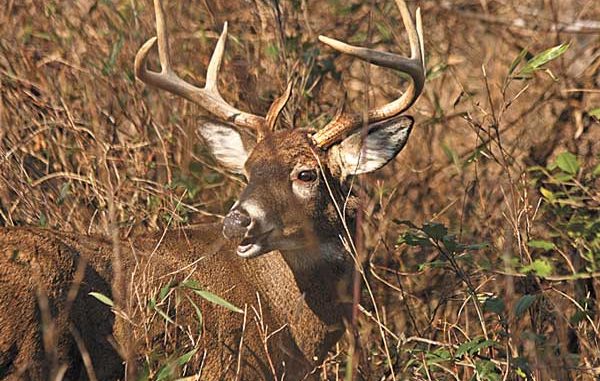
Even wary, late-season bucks might have an Achilles heel. Here’s how to take advantage.
If September is the best month to harvest does and October’s rut is the best chance to tag a buck, then what does that make the remainder of deer season?
By now, every whitetail in the woods has been educated about the presence of man by his scent and forays into the woods. Still-hunting is certainly not ruled out for the rest of the season — it will still be effective when hunger or weather come into play — but sneaky or aggressive game plans are often the best bet when targeting pressured deer.
It’s no secret that one of the surest methods for late-season success is to plant a food plot that matures in the late fall and early winter. The sneaky part of this equation is that you don’t want to hunt the area until the crop matures and the deer are using it. If you want to capitalize late in the season, you need to stick to the game plan and save that stand — you’ll be glad you did.
Check your hunting land for a powerline right-of-way as the potential site for a new food plot. Through the P.O.W.E.R. for Wildlife Program (Protecting Our Wildlife at Every Right-of-Way), utility companies encourage wildlife planting with a reduced-cost seed program, because it saves them untold annual mowing costs.
“Even if you don’t plant it and simply disk the right-of-way, it will stimulate the seedbed to produce native plants that will produce some value,” said Steve Edwards of the Lowcountry Resource Conservation and Development Council.
An example of a seed that matures late is Pennington’s Durana White Clover, which can be planted in September or October. “Clover is a perennial seed, so this planting establishes a commitment to late-season nutrition for several years, with a maintenance plan of summer mowing (of weeds) and a fall application of lime and fertilizer,” Pennington’s Richie Eubanks said.
Since the keys to a trophy buck are genetics, age and nutrition, a clover plot pays dividends any time a deer browses it — whether you were looking or not.
Making something happen late in the season can mean using some tools to lure a curious deer to the gun. Rattling antlers may be most productive during the rut, but hunter Comer Morrison of Yemassee says that one of the best spots to set up for a late-season rattling session is near a log deck that is more than two years old.
“The log deck will be grown up in some bushes, and it will become a part of the woodland landscape for whitetail deer, and they love to lay up near them or right next to them,” he said.
“Using a partner system, have one (hunter) rattle some antlers on one side of the log deck, while the other hunter is stationed on the ground on the far side, looking for deer movement.”
Hunters can also use a doe bleat call or a buck grunt call to vary the sales pitch being broadcast to the pressured deer. Adding a doe-urine scent or even a full-bodied decoy is an option, because when you use aggressive tactics, you are hunting with a sense of purpose.
Deer tend to be homebodies; they’ll stay on a tract of land as long as it suits them. The Quality Deer Management Association teaches that a specific tract can only produce enough forage to sustain a certain number of deer, which translates into the tract’s “carrying capacity.” QDMA guidelines call for an aggressive harvest of does in September in order to lower the population going into the breeding season. Fewer does to breed leaves bucks in better shape, and it protects the tract from overpopulation.
While deer tend to stay “at home” when presented with quality habitat, hunters recognize that some deer will simply never be harvested. They are too wary from pressure and may simply go nocturnal for the remainder of the season. However, some deer will retreat to an out-of-the-way woodland pocket or thicket, and they won’t stray far for food and water. These areas offer a chance for the late-season hunter who is willing to set up a stand on the edge of this area and patiently wait for an opportunity.
A deer stronghold can be located using a map, looking specifically for an area on the property that has little or no vehicular access. If it’s so thick that not even a 4-wheeler has been through it, that makes it a likely spot where deer will seek refuge. Sometimes, a pocket of land just doesn’t get hunted, but a scouting trip to look for deer sign — fresh droppings, rubs, scrapes or older, shed antlers — will be clues that it could be an area where deer lay low when the pressure is on.
Driving for deer with hounds has run into a meat grinder of criticism, some of it well-deserved, but most hunters admit it is an effective tool for late-season deer harvest.
While some hunters employ dogs from the Aug. 15 opening day in the Lowcountry, others rely on it for late-season drives during the Thanksgiving, Christmas and New Year’s Day holidays. Driving for deer with hounds is a fair-chase method of hunting that may face greater restrictions in the future.
Many private landowners prescribe to a quality deer management program, which often involves years of footing the feed and seed bill to provide optimum nutrition as well as superhuman trigger restraint to steward your best bucks. They recognize that their investment in time and money usually is best served by still-hunting.
When drives are conducted on other nearby tracts and dogs stray from onto the still-hunting lease, hunters claim that this type of intrusion ruins their chance for a productive hunt, while dog-drivers wonder why still-hunters can’t appreciate that they might run a deer or two towards them on occasion. This scenario has played out countless times, and the end result is usually a colossal dust-up that leaves each party frayed and irritated.
No matter what side of the fence a hunter sits, there can be no argument that dog-driving is a great late-season tool for hunting pressured deer.
Mike Polk of Islandton and his dog-driving club makes a point of hunting with every day on the last week of deer season.
“This is what we live for around here, getting serious about deer hunting with dogs,” he said. “We kill most of our deer during the last week of the season, and we run ’em hard.”

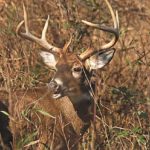
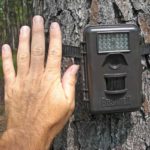
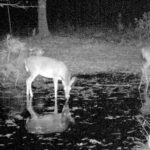
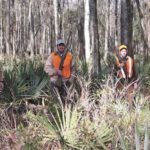
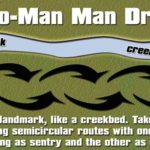
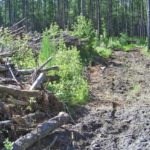


Be the first to comment